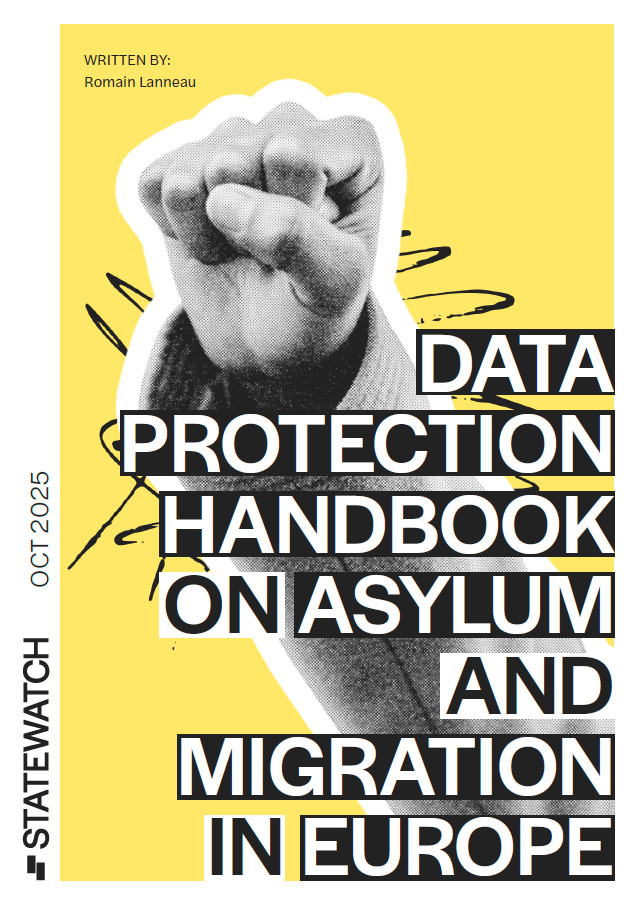Data Protection Handbook on Asylum and Migration in Europe
Topic
Country/Region
31 October 2025
The EU’s immigration and asylum system is governed by a complex set of rules. As well as being regularly amended by legislators, those rules are also subject to frequent interpretation (and re-interpretation) by the courts. The increasing use of digital technologies and databases for the enforcement of immigration and asylum law adds a further twist to this complicated scenario.
Support our work: become a Friend of Statewatch from as little as £1/€1 per month.
 Data Protection Handbook on Asylum and Migration in Europe (pdf)
Data Protection Handbook on Asylum and Migration in Europe (pdf)
Introduction
The EU’s immigration and asylum system is governed by a complex set of rules. As well as being regularly amended by legislators, those rules are also subject to frequent interpretation (and re-interpretation) by the courts.
The increasing use of digital technologies and databases for the enforcement of immigration and asylum law adds a further twist to this complicated scenario. Personal data gathered, stored and processed by the authorities may be crucial in the assessment of an individual’s claim for international protection, for a visa, or to contest deportation.
Understanding these systems and technologies, and the laws that govern them, is therefore increasingly important for immigration and asylum practitioners. Such an understanding needs to be underpinned by knowledge of privacy and data protection rights, and the policies, legislation, practice and jurisprudence that shape them. This handbook is designed to offer the foundation of that understanding.
Section 1 provides the context for the growing deployment of digital technologies as part of EU immigration and policy. Borders and the people who cross them are often treated as testing grounds for new technologies, the development of which is increasingly outsourced to private companies by public authorities. An overview of some key technologies used at both EU and national level is offered.
Section 2 gives in-depth but accessible explanations of key privacy and data protection principles, terms and concepts. It provides an overview of the six data protection principles, explains relevant EU data protection legislation, and looks at how courts have interpreted questions related to privacy and data protection, including in the context of immigration and asylum cases.
Section 3 examines how data protection law can be used to seek redress for individuals. It explains the different components of an individual’s right to access their own personal data, and to have it rectified or deleted if needs be. It then explains how to exercise the right of access, and the different bodies from whom redress can be sought.
Given the dire situation for many people in the immigration and asylum system(s) in the EU, the issue of data protection may seem relatively minor. However, infringements of privacy and data protection rights can underpin other rights violations. Think, for example, of a deportation based on mistaken identity, refusal of a visa due to an algorithmic assessment, or continued harassment from the police due to being mislabelled a danger to national security.
The avenues for redress offered by data protection law can offer ways to help seek justice in these and many other situations. As increasing amounts of personal data are gathered from people crossing borders, understanding data protection law and its uses will only become more important. We hope this guide is useful for people seeking justice in the EU’s immigration and asylum system, and for the lawyers, case workers, volunteers and others who support them.
Data Protection Handbook on Asylum and Migration in Europe (pdf)
Our work is only possible with your support.
Become a Friend of Statewatch from as little as £1/€1 per month.
Further reading
Data exchange, exclusion and denial at the borders
<p>Upholding the right to an effective remedy</p> <p><em>November 2023-September 2025</em></p>
Spotted an error? If you've spotted a problem with this page, just click once to let us know.

